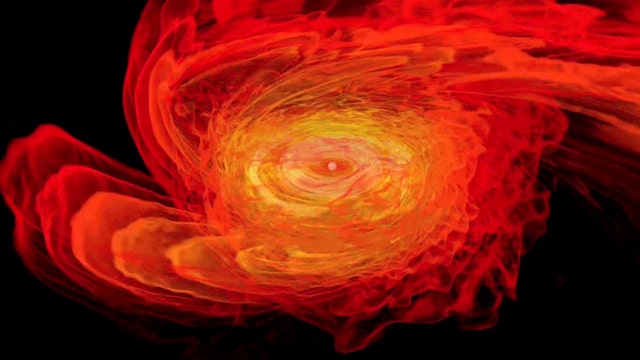Black hole forms in one of universe's most violent events
NASA supercomputer simulation shows neutron stars ripping each other apart to form black hole
A new supercomputer simulation released by NASA showcases two neutron stars colliding and merging to produce a black hole, in what is one of the most violent events in the universe.
The simulation, which covers an event only 20 milliseconds in length, begins with two neutron stars – one bigger than the other – spiraling toward each other.
Neutron stars are remnants of supernova explosions and contain about 1.5 times the mass of the sun -- equivalent to about half a million Earths – inside a ball 12 miles across, according to NASA.
As the super-dense stars near each other, tidal forces from the larger star rip the smaller star apart. The smaller star’s contents then curl a spiral arm of hot material around the larger star.
“At 13 milliseconds, the more massive star has accumulated too much mass to support it against gravity and collapses, and a new black hole is born,” NASA said in a statement. “The black hole's event horizon -- its point of no return -- is shown by the gray sphere. While most of the matter from both neutron stars will fall into the black hole, some of the less dense, faster moving matter manages to orbit around it, quickly forming a large and rapidly rotating torus.”
Scientists think mergers like this one product short gamma-ray bursts that last less than two seconds, yet emit as much energy as all the stars in our galaxy create in one year, according to NASA.
The video was produced by NASA’s Goddard Space Flight Center.

